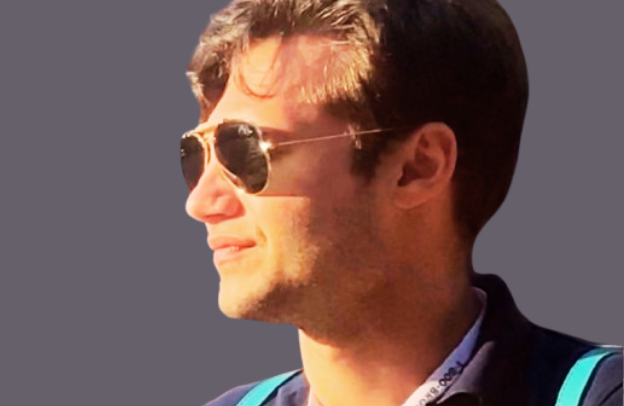The Life & Legacy Of Simon Kimbangu (Congolese Religious Leader) With Kiatezua Lubanzadio

In today’s episode of the Obehi podcast, Dr. Kiatezua Lubanzadio talks about The Life & Legacy of Congolese Religious Leader, Simon Kimbangu. Enjoy the reading and leave your thoughts in the comment section below.
Want to learn more about storytelling? Start by downloading the first chapter of The Storytelling Series for Small Businesses.
See The Full Interview with Dr Kiatezua Lubanzadio Luyaluka
Who is Simon Kimbangu?
The spiritual and political import of his thought
Recently the Congolese government has introduced a law establishing the 6 April of each year as a holiday dedicated to the “fight of Simon Kimbangu and the African consciousness”. Now, 6th April is the date that marked the beginning of the healing and prophetic activities of Simon Kimbangu. Thus, it is in memory of that historical day that we are doing this show.
Kimbangu was born in 1887 in the village called Nkamba, in what is now the administrative territory of Mbanza-Ngûngu in the Democratic Republic of Congo. His father is Kuyela and his mother Luezi. This latter died while Kimbangu was still crawling. Thus, the boy was raised by his aunt Kinzembo, a herbalist.
Kimbangu became a member of a protestant church in 1915 and belonged to the Baptist Mission Society, through its nearby station of Gombe Lutete. He married Muilu, the widow of his late uncle. With Muilu, he had three sons and a girl who died shortly after her birth. But Muilu had a daughter from her previous marriage.
In 1920 Kimbangu headed to Kinshasa where he was hired at HCB (a palm oil factory) as a checker. However, at moments of pay, it always appeared that his wage was taken by an unknown person while the signature proved to be that of himself. Due to this problem, he decided to change his job and switch to small business. But this was to no avail. To his dismay, clients always returned the cassava bread he was selling claiming that they were corrupted.
This failure caused him to go back to his abiding village, Nkamba. As I said above, his healing work started on 6 April 1921. On that memorable day, on his way to the market, Kimbangu healed Nkiantondo who had a severe disease that made her kins fear for her life. The healing was deemed a miracle. Thus started a healing career that will witness the documented resuscitation of 5 persons and many miraculous healings.
The spiritual career of Kimbangu will be characterized by three elements:
The healing work will lead many people to move to Nkamba, thus disrupting the economic life of the territory.
The theological nature of his teachings which were marked by the recourse to both Protestantism and African traditional religion (ATR).
His predictions of the future independence of the Belgium-Congo and liberation of the Black people of Africa from the yoke of the West.
It is mostly the theological nature of the teachings of Kimbangu and his predictions in favor of the freedom of Black people that is of the greatest importance to us in this show.
Though Kimbangu was a protestant, it would be a mistake to circumscribe his teachings and healing practice into the limits of Christianism. He exhibited a double standard whereby he was publicly speaking and healing in the name of Jesus Christ, while within the circle of his closest followers, his stance was one of an initiate of ATR.
This connection of the Kôngo prophet with ATR is clearly seen in his prayer pronounced in the forest of Mbanza-Nsânda during the underground phase of his healing work. Contrary to the devotional practice of Christians, this prayer was addressed neither to the Most High God, nor to Jesus, nor the Holy Ghost.
This famous prayer is really a master document of the theology of Bukôngo, the Kôngo religion. It reveals the Kongo initiates’ way of praying and the hierarchical theism of their religion which includes:
A transcendent Most High God named Nzâmbi Ampúngu Tulêndo.
A creator of this temporal universe called Mbûmba Lowa (solar creator)
Mpina Nza, the God-governor of all in the heaven and in the temporal realm.
Kongo, the eponymous highest divinized ancestor of the Kongo people.
Thanks to this revelation of the Kôngo hierarchy of divinities, congruence can be established between the Bukôngo, the religions of ancient Egypt and of Sumer, as well as with early Christianity. Thus, Kimbangu gives us the theological proof of the link between ancient Egypt and the Bantus people, especially the Kongo people.
This link between Kongo people and ancient Egyptians was depicted by Bastian quoted by Gerald Massey in his “Book of the Beginnings “: ‘When [the Bakongo] spoke to a superior they might have sat as models to the Egyptian priests when making the representations on the temple walls, so striking is the likeness between what is there depicted and what actually takes place here [in the Kingdom of Kongo].’ Theirs were the primitive sketches, the Egyptians finished the picture.
It is also worthy to know that where Cheikh Anta Diop demonstrated, through his proof of the melanin rate, the unity of South-Saharan Africa with ancient Egypt, and Theophile Obenga stressed the same unity thanks to linguistics, Simon Kimbangu allows us to establish this unity thanks to theological congruence.
Moreover, the importance of the hierarchy of the divinities furnished by Kimbangu Is seen also in the fact that it enables other Africans to seek and discover this hierarchy in their traditional spiritual cultures.
Lastly, let’s mention that this master document of African traditional religion enables us to interpret correctly the four elements, i.e., fire, earth, water, and air, that were seen by Aristotle as the components of the universe. Kimbangu’s use of this element in his prayer shows that they are the four states of the elevation of consciousness. Starting from the earth, those who do not accept spiritual truth find themselves in a state of suffering symbolized by fire here or in the beyond. For those who accept spiritual truth and live it, they are in the water, in a state of purification, working to reach the air where they will be pure spirits.
Now, on the political level, the purpose of the Kongo Prophet was to prepare the Congoleses, even the Black people, for the independence that was to be expected. These prophecies are mind-blowing when one considers that in the Belgium-Congo the Black people had neither higher education nor access to a formation to equip them to be able to run a modern State.
As for the sign of the imminent accomplishment of independence, the prophet said: when you see a skyscraper being built in Kinshasa, then the moment is near. The first skyscraper in South-Saharan Africa was built in 1945, a mere ten-story building called Forescom which was the tallest before the Cocoa Building of Nigeria.
However, Kimbangu did not only prophesy the independence of the Belgium-Congo, he also spoke of:
The nature and performances of the first presidents of the independent Congo.
The fact is that the country will witness the infiltration of foreigners, even at the top level of its administration.
He thus prophesied the second Independence of the Congo which would be the separation of the Congolese from the foreign infiltrates.
For Kimbangu, the second independence of the Congo will lead to the rise of African-Black nations.
The African young people will then have the intelligence to invent technologies that will surpass Western achievements.
Summarizing his thoughts, the Kongo prophet said that the “Black people will become White, and the White people Black”. By this, he didn’t think of a racial mutation of the people, his concern was the epistemological shift that would lead to the African religious, scientific, and technological paradigm becoming the leading standard in the world.
The healing work of Simon Kimbangu was such a huge success that tens of thousands of pilgrims from the Belgian Congo, the French Congo, and the Portuguese Congo, or Angola, flocked to the village of Nkamba, where he was operating. This naturally led to the disturbance of the economic activities around: workers deserted factories, the nearby hospital of Gombe Matadi was abandoned not only by the patients but even by the medical team, etc.
For the colonial authorities, the liberation theology of Kimbangu and his success had to be stopped. The prophet became a target of the police. As it wasn’t time for him to be arrested, he turned to underground activities, hidden from the colonists but accessible to the Blacks in the forests of the surrounding villages for three months. At the end of this period, he surrendered to the colonial authorities who arrested him. He was brought to the court and sentenced to death.
As the sentence was commuted by the then King of Belgium to life imprisonment, Kimbangu was incarcerated at Elisabethville, now Lubumbashi. While in prison he was being seen in various places free and teaching and even healing. Simon Kimbangu died in 1951 after having shared words of wisdom with his prison mates and predicting the time of his death: 3 p.m.
The great Kongo prophet has corporeally died; but as a spirit, he is always active as a mighty holy ancestor. Moreover, his prophecies are still alive. Today, African Black people are awakening and looking earnestly to that glorious moment where the “Blacks will become White”.
About the guest – Kiatezua Lubanzadio
After architectural studies and a brief career in Christian Science teaching and lecturing, Dr. Kiatezua Lubanzadio Luyaluka earned a Ph.D. (Honors) degree in Apologetics from Trinity Graduate School of Apologetics and Theology of Kerala, India.
Based in Kinshasa, DRC, Dr. Luyaluka is currently the Director of NZIL’ALOWA, a center devoted to solar renaissance as the recourse, even return, of Africans to the traditional epistemology and spirituality that marked the success of ancient Egypt and precolonial south-Saharan civilizations.
NZIL’ALOWA comprises a research center called Institut des Sciences Animiques and an Initiatory branch that introduces Africans, i.e., Blacks, to the practice of African Divine Science, which implies spiritual healing and fighting witchcraft.
As a researcher, Dr. Luyaluka has published more than 25 scientific papers and authored 14 books on African spirituality and epistemology. His major scientific contributions to academic knowledge include:
- The first statement of a systematic natural theology. It shows that the core corpus of the religion of ancient Egypt, Sumer, and Kôngo culture is a set of deductive coherent statements, an exact science. This implies that in its original form, the African traditional religion is also an exact science!
- The simplest « theory of everything », the easiest mathematical explanation of gravitation at the astronomic and subatomic levels resulting from the cosmology of African traditional religion.
- The first statement of the naturalized epistemology of African traditional knowledge. It demonstrates that African traditional knowledge is a science based on posterior trusts.
Dr. Luyaluka is currently one of the leading scholars in the field of African traditional religion, especially in the domain of Bukôngo or kôngo religion.
You can reach Dr. Kiatezua Lubanzadio Luyaluka on his Website – www.nzilalowa.com
Learn More About Obehi Podcast
Obehi Podcast brings you leaders and experts from different industries to share their experiences, relating to the African diaspora, business, and storytelling. Listen to Obehi Podcast across different platforms: Spotify, Apple Podcast, YouTube, and much more.
Want to learn more about storytelling? Start by downloading the first chapter of The Storytelling Series for Small Businesses.






